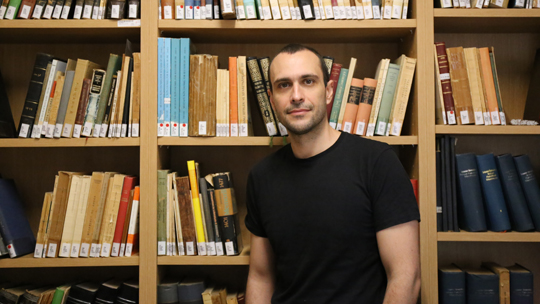- About Us
- Latest News
- Calendar
- Education
- School History
- ELA - For Toddlers
- Greek as a Second Lang.
- Greek as a Primary Lang.
- Conversational Skills (Online)
- Online Greek Courses
- Greek for Adults
- Ancient Greek
- Open Seminars
- Creative Drama
- Traditional Greek Dance
- Apply to Teach
- Holiday Program Enrolment
- Excursion - Museum
- School Polo Order Form
- Parent Notice to School
- Community Churches
- Membership
- Greek Centre
| SEMINAR: The Janissaries of Crete, 1669-1826 |
 Dr Yannis Spyropoulos will present an online-only lecture entitled The Janissaries of Crete, 1669-1826, on Thursday, 23 June 2022, at 7 pm, as a part of the Greek History and Culture Seminars, offered by the Greek Community of Melbourne. Dr Yannis Spyropoulos will present an online-only lecture entitled The Janissaries of Crete, 1669-1826, on Thursday, 23 June 2022, at 7 pm, as a part of the Greek History and Culture Seminars, offered by the Greek Community of Melbourne.
After the end of the War for Crete in 1669, thousands of soldiers were sent to the island in order to defend the Empire's last major conquest from the Venetians. Due to its strategic location, even after the official cessation of the Ottoman-Venetian war in 1718, Crete maintained the status of a frontier (serhad) and, along with it, a considerable number of Janissaries in its three major cities. The 18th century brought about drastic changes to the entire Janissary establishment and especially to its provincial organization. In the framework of this transformation, the Janissary units of Crete went through a process of gradual localization which led to the acceptance of thousands of Cretans into their ranks and to the creation of broad local networks that included the largest part of the island's Muslim population. The result was an increasing involvement of the corps' members into the local economy and the evolution of the Janissary regiments into the island's biggest credit organizations. Moreover, the Janissaries became the main players in the island's political life, a development that would lead first to the weakening of the centrally appointed officers' administrative power in the province and, eventually, after the ascension of Mahmud II to the Ottoman throne, to extended clashes between the central government and the local Muslim elite. Yannis Spyropoulos studied History in Komotini (Department of History and Ethnology) and Turkology in Rethymno (Department of History and Archeology/Institute of Mediterranean Studies), where he also compiled his Ph.D. dissertation entitled "Social, Administrative, Economic and Political Dimensions of the Ottoman Army: The Janissaries of Crete, 1750-1826 "(2014). While writing his dissertation, Spyropoulos was granted fellowships by the “Herakleitos II” (2010-2013) and the Research Center for Anatolian Civilizations (Koç Foundation) in Istanbul (2009-2010). He is the author of Ottoman Administration and Society in Prerevolutionary Western Crete: Archival Testimonies (1817-1819) (in Greek) and has published articles in various collective volumes and journals, such as the International Journal of Turkish Studies, Turcica, Turkish Historical Review, European Journal of Turkish Studies, and Water History. When: Thursday 23 June 2022, 7 pm |





